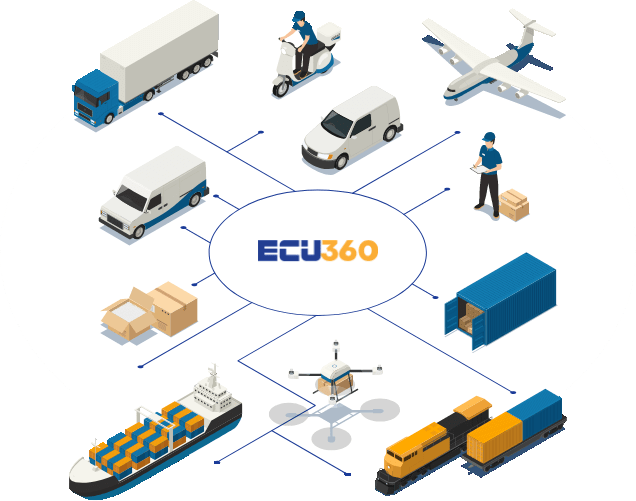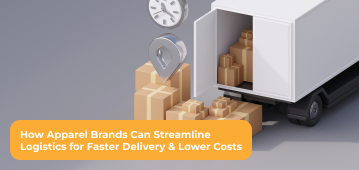Seamless Fulfillment Migration: A Step-by-Step Guide for Growing Ecommerce Brands
As ecommerce brands scale, operational complexity increases. Managing orders across multiple warehouses, platforms, and partners can create inefficiencies that slow growth. A seamless fulfillment migration — transitioning your fulfillment operations to a more capable, integrated, and scalable system — ensures your logistics infrastructure can grow with your business. This guide outlines the essential steps for ecommerce leaders planning a smooth migration process that enhances supply chain efficiency and brand scalability.
1. Understanding Fulfillment Migration
Fulfillment migration involves transferring your order processing, inventory management, and shipping workflows from one system or partner to another. For growing ecommerce businesses, this process typically includes shifting from a basic fulfillment setup to a robust logistics solution that integrates technology, warehouse management systems (WMS), and real-time analytics.
Common triggers for migration include:
- Rapid order volume growth
- Geographic expansion
- Inefficient warehouse operations
- Rising fulfillment and shipping costs
- Limited automation or outdated technology
The goal is clear: establish a seamless fulfillment infrastructure that delivers efficiency, accuracy, and customer satisfaction at scale.
2. Conducting an Operations Audit
Before initiating the migration, perform a detailed audit of your current fulfillment process. Evaluate your:
- Order management system (OMS) for visibility gaps and integration limits
- Warehouse operations for throughput, accuracy, and space utilization
- Inventory management for stock accuracy and data synchronization
- Shipping automation and carrier integrations
Document challenges such as delayed order updates, stock discrepancies, or slow dispatch times. This diagnostic phase helps define your technical and operational requirements for a new fulfillment solution.
3. Defining Migration Objectives
Clear objectives guide successful fulfillment migration. For B2B ecommerce brands, key targets often include:
- Improving supply chain efficiency
- Reducing order-to-delivery time
- Enhancing data visibility across channels
- Enabling warehouse integration with multiple platforms
- Building a scalable logistics solution that adapts to growth
Quantify your goals — for example, reducing order errors by 30% or achieving 99% inventory accuracy — to measure post-migration success.
4. Selecting the Right Fulfillment Partner
Choosing the right fulfillment partner is the most strategic decision in the migration process. Look for a partner that provides:
- End-to-end ecommerce fulfillment capabilities
- Advanced warehouse management systems (WMS)
- Seamless integration with ecommerce platforms and ERP systems
- Scalable infrastructure to support future growth
- Data-driven logistics optimization
A fulfillment partner like ECU 360 offers unified logistics solutions tailored to evolving ecommerce operations. Their platform integrates order management, inventory tracking, and shipping automation to ensure continuity during migration and scalability afterward.
5. Planning the Migration Timeline
A structured migration plan reduces downtime and risk. Key phases include:
- Preparation – Define KPIs, backup data, and communicate with internal teams.
- System Setup – Configure new OMS, WMS, and integrations with ecommerce channels.
- Data Migration – Transfer product SKUs, order history, and customer data securely.
- Testing and Validation – Run test orders to validate workflows, labeling, and fulfillment speed.
- Go-Live – Switch operations and monitor performance metrics closely.
A phased rollout, starting with a single product category or region, helps identify potential issues before full implementation.
6. Managing Data and System Integration
Data integrity is the backbone of seamless fulfillment migration. Synchronize inventory, order, and shipping data between your old and new systems using secure APIs or integration middleware.
Ensure:
- Real-time inventory updates across all channels
- Consistent SKU mapping
- Accurate order tracking data flow
Integration with warehouse management and order management systems ensures operational continuity and eliminates manual errors.
7. Staff Training and Change Management
Technology alone cannot guarantee success. Your teams must adapt to new workflows and systems. Conduct structured training sessions focused on:
- Using the new OMS and WMS
- Managing exceptions and escalations
- Interpreting logistics dashboards and performance reports
Assign a dedicated migration manager to oversee change management, communication, and performance monitoring across departments.
8. Testing and Quality Assurance
Before switching fully, simulate real-world operations. Test scenarios such as high-volume order spikes, split shipments, and multi-location dispatch. Verify:
- Order accuracy
- Processing speed
- Labeling and packaging workflows
- System latency
Quality assurance ensures your fulfillment process runs smoothly before your customers experience any impact.
9. Post-Migration Monitoring
Once live, continuous performance tracking is critical. Monitor:
- Fulfillment speed and accuracy
- Warehouse efficiency metrics
- Return and refund rates
- Customer satisfaction scores
Set up automated dashboards to track KPIs. Regularly review reports with your fulfillment partner to identify opportunities for further optimization.
10. Leveraging Analytics for Continuous Improvement
Modern fulfillment systems provide valuable analytics that drive decision-making. Use insights to:
- Forecast demand and manage inventory proactively
- Optimize carrier selection and route planning
- Identify bottlenecks in warehouse operations
- Refine ecommerce growth strategies based on data
Continuous improvement turns migration from a one-time project into a long-term competitive advantage.
11. Common Challenges and How to Overcome Them
Fulfillment migration can encounter challenges such as data mismatches, integration errors, or operational delays. To mitigate risk:
- Maintain backups of all critical data
- Use automated validation tools during migration
- Conduct pilot testing before full rollout
- Keep parallel operations for a short transition period
A proactive approach minimizes disruption and builds resilience in your supply chain.
12. Building Scalable Logistics for the Future
As ecommerce continues to evolve, fulfillment is becoming a strategic growth driver. Scalable logistics solutions enable brands to handle seasonal spikes, enter new markets, and deliver superior customer experiences. Investing in advanced warehouse integration, intelligent order management, and automated shipping will ensure your operations scale seamlessly.
ECU 360’s comprehensive logistics ecosystem empowers ecommerce brands to simplify migration, integrate systems efficiently, and scale confidently. From warehouse management to real-time tracking and analytics, ECU 360 ensures your fulfillment transition fuels long-term growth.
Conclusion
Seamless fulfillment migration is more than a systems upgrade — it is a strategic evolution of your ecommerce operations. By following a structured, data-driven approach and partnering with an experienced logistics provider like ECU 360, brands can optimize performance, improve customer satisfaction, and build sustainable scalability.
Ready to migrate without disruption?
Connect with ECU 360 today to simplify your fulfillment transformation and unlock operational excellence.
Like





Comments